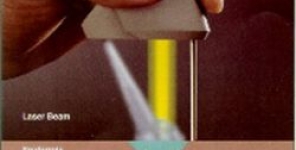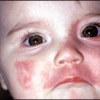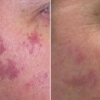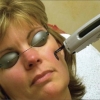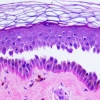L'esperienza clinica nel trattamento delle macchie vino-porto con vescicole
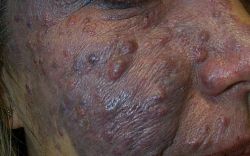 L'attuale modalità scelta per il trattamento delle macchie vino-porto (PWS) è la foto-coagulazione laser. La terapia laser per il trattamento delle PWS, specialmente con un dye laser pulsato (PDL) si è dimostrata sicura ed efficace; tuttavia, siccome l'infiltrazione del PDL è troppo bassa per un'efficace ablazione delle vescicole, il trattamento delle PWS vescicolose, utilizzando PDL, potrebbe essere insufficiente.
L'attuale modalità scelta per il trattamento delle macchie vino-porto (PWS) è la foto-coagulazione laser. La terapia laser per il trattamento delle PWS, specialmente con un dye laser pulsato (PDL) si è dimostrata sicura ed efficace; tuttavia, siccome l'infiltrazione del PDL è troppo bassa per un'efficace ablazione delle vescicole, il trattamento delle PWS vescicolose, utilizzando PDL, potrebbe essere insufficiente.
OBIETTIVO:
Abbiamo dimostrato l'efficacia clinica di un laser Nd:YAG a impulso lungo di 1,064 nm con un dispositivo di raffreddamento a contatto per PWS vescicolose.
METODI:
Ventuno pazienti con PWS vescicolose (tipi di pelle Fitzpatrick II-V) sono stati sottoposti al trattamento, utilizzando un laser Nd:YAG a impulso lungo di 1,064 nm con un dispositivo di raffreddamento a contatto, ad intervalli di 8 settimane. I trattamenti sono stati eseguiti con spot delle dimensioni di 5~6 mm a 20~30 ms e 95~170 J/cm(2). I parametri laser sono stati regolati al fine di soddisfare le esigenze delle lesioni di ogni singolo paziente.
RISULTATI:
Tutti i soggetti hanno ben tollerato i trattamenti, e hanno mostrato un miglioramento clinico dalle vescicole. Dei 21 pazienti, 18 di loro hanno sperimentato una risposta moderata o eccellente.
CONCLUSIONE:
L'uso di un laser Nd:YAG a impulso lungo di 1,064 nm ha portato ad una maggiore profondità di coagulazione vascolare. Il laser Nd:YAG a impulso lungo di 1,064 nm con un dispositivo di raffreddamento a contatto può essere considerato un'opzione terapeutica promettente per il trattamento delle PWS vescicolose.
Storia della pubblicazione:
Titolo: Clinical experience in the treatment of port-wine stains with blebs
Rivista: Ann Dermatol. 2012 Aug;24(3):306-10. Epub 2012 Jul 25.
Autori: Lee HR, Han TY, Kim YG, Lee JH.
Affiliazioni: Department of Dermatology, Eulji Hospital, College of Medicine, Eulji University, Seoul, Korea.
Abstract:
BACKGROUND:
The current modality of choice for the treatment of Port-wine stains (PWS) is laser photocoagulation. Laser therapy for the treatment of PWS, especially with a pulsed dye laser (PDL), has been proven safe and effective; however, because penetration of the PDL is too shallow for an effective ablation of the blebs, treatment of blebbed PWS, using PDL, may be insufficient.
OBJECTIVE:
We demonstrated the clinical efficacy of a 1,064 nm long pulsed Nd:YAG laser with contact cooling device for blebbed PWS.
METHODS:
Twenty one patients with blebbed PWS (Fitzpatrick skin types II-V) underwent a treatment, using a 1,064 nm long pulsed Nd:YAG laser with a contact cooling device at 8-week intervals. Treatments were done using 5~6 mm spot sizes at 20~30 ms and 95~170 J/cm(2). Laser parameters were adjusted in order to meet the needs of each individual patient's lesions.
RESULTS:
All subjects tolerated the treatments well, and showed clinical improvement from blebs. Of the 21 patients, 18 of them experienced either moderate or excellent response.
CONCLUSION:
Use of a 1,064 nm long pulsed Nd:YAG laser results in a greater depth of vascular coagulation. A 1,064 nm long pulsed Nd:YAG laser with contact cooling device may be regarded as a promising therapeutic option for the treatment of blebbed PWS.
